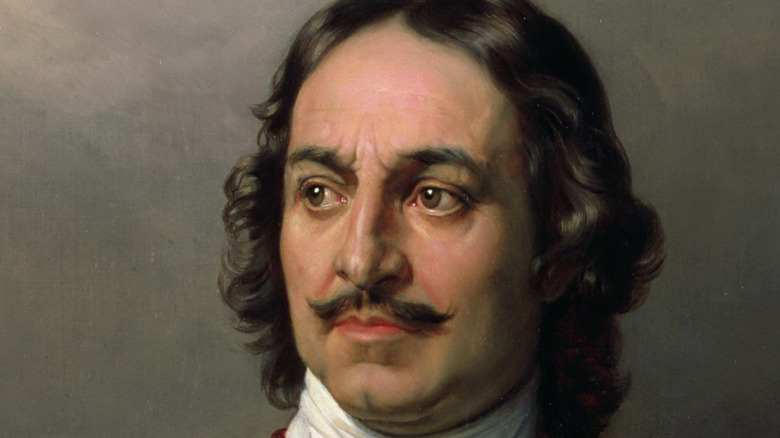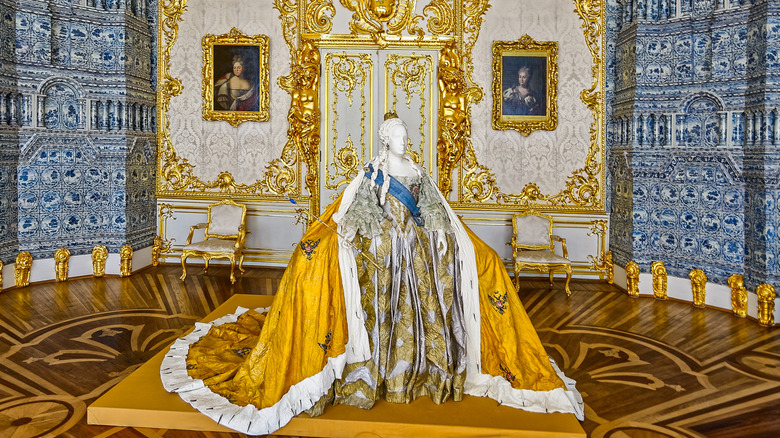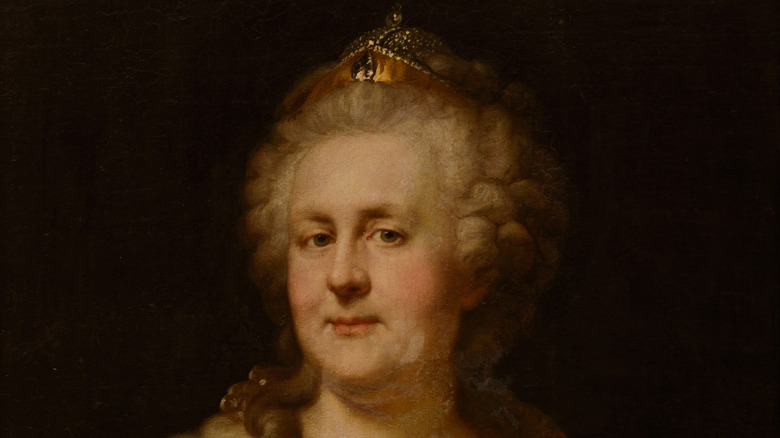What Really Happened After Peter The Great Died?
Peter the Great is one of two Russian monarchs with that superlative. His reign had grown the influence of Russia and strengthened its military might. But after his death, Russia saw some turmoil.
Peter the Great was the Czar of Russia beginning in 1696, according to Biography. Born Piotr Alekseyvich, the 14th child of Czar Alexis and his second wife, he had not been expected to rule. But after the death of his father, who co-ruled with his brother, Peter's prominence rose.
As czar, Peter the Great reformed many things in Russia, including modernizing the Russian alphabet. He made trade easier, encouraged a greater focus on science, and even angered the aristocracy (per History). His reign brought many military wins and Russia gained land from Estonia, Latvia, and Finland. He also invaded part of Sweden and established St. Petersburg. So now you know why he's called Peter the Great.
Peter the Great, while great, made a crucial decision that brought turmoil to Russia after his death in 1725. As History points out, Peter did not have the greatest relationship with his son, the tsarevich Alexei. His heir did not have the same military strength as the father. Peter feared his enemies would coalesce around his son and support. So eventually, even though Alexei offered to renounce his claim to the throne, Peter ordered the death of his eldest son. When Peter died, he had failed to do the one thing a good leader should always do. He never named an heir.
The era of many heirs
Peter had some surviving children, and his murdered son also had offspring. But the question was, which of them would take up the mantle and continue the reforms Peter the Great had begun? Encyclopedia Britannica writes that Russia's laws had made it so that the monarch reserves the right to name his successor. It wasn't as simple as handing over the throne to his next of kin. Right after his death, Peter's closest allies pushed his widow, Catherine I, on the throne. Behind the scenes, most of the decisions were made by his chief advisor, Prince Aleksandr Danilovich Menshikov. However, Menshikov came under pressure from other nobles and he ended up having to share power with a group of people.
Things were going fine until Catherine I died, thus once again opening the issue of succession. The nobles turned to Peter's grandson and crowned him Peter II. However, Peter II was young and easily influenced, explained Saint Petersburg.com. He fell under the influence of other noblemen who exiled Menshikov. Unfortunately, Peter II suddenly died on the day of his wedding.
Peter's niece, the dowager duchess of Courland Anna, took the throne. She disbanded the advisory council and ruled as an autocrat. Anna hoped to install her heirs to the throne and prevent further reforms. But Anna was a terrible leader, and the nobles hated her. So they instead rallied around Peter I's daughter Elizabeth. For years after Peter I's death, his reforms were put on hold. But Elizabeth made them flourish.
The rise of Catherine
Under Elizabeth, Russia saw its first university and won battles during the Seven Year's War, said Encyclopedia Britannica. Her government attempted to modernize mining and agriculture. It seemed the seeds Peter I planted had started to grow. However, the childless Elizabeth died. She had named her nephew Peter III as her successor. Peter III, who wasn't actually fully Russian, alienated his people. He never really liked his adopted country. Before Elizabeth died, she orchestrated the marriage between Peter III and Princess Sophie of Anhalt-Zerbst. Upon arriving in Russia, she took the name Catherine.
Smithsonian Magazine reports Catherine knew she had to act differently than her boor of a husband. She made herself beloved among her people by embracing everything about Russia. She saw the good in Peter I's reforms and longed to make Russia a bigger player in international politics. She also wanted to abolish serfdom, but it took decades before this dream could happen.
And so, just six months into Peter III's reign, Catherine's lover Count Grigory Orlov staged a coup and forced Peter III to abdicate. And thus, Catherine ascended as the Tsarina Catherine the Great. And just like Peter the Great, Catherine made many reforms and opened up Russia to the rest of Europe.
The years after Peter the Great's death were politically tumultuous. It took years, and several rulers, before another would continue the good work he wanted to do — until another person was again deemed Great.


